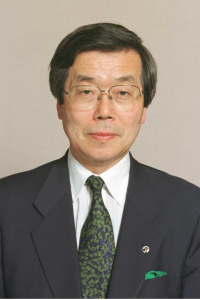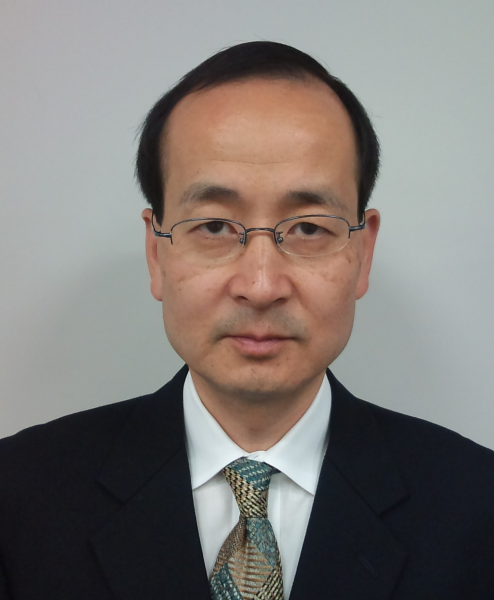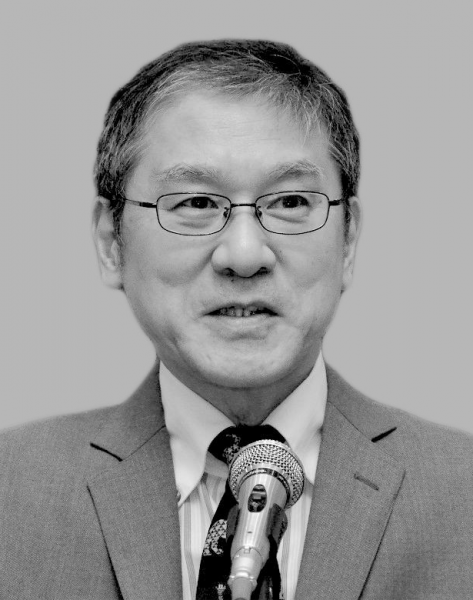A Year after the Launch of Abenomics: High Expectations for Sustainable Growth from Structural Reforms

KOJIMA Akira, Member, Board of Trustees, and Adjunct Professor, National Graduate Institute for Policy Studies (GRIPS); Trustee, Japan Center for Economic Research (JCER)
The Japanese economy has begun to show signs of breaking away from the sustained deflation that has lasted more than fifteen years, unprecedented in modern world history. Japanese stock prices are maintaining their inherent upward momentum, and in its revised January 2014 World Economic Outlook, the International Monetary Fund (IMF) revised its forecast for Japan’s real GDP growth in 2014 (the real economic growth rate) up by 0.4 point from its forecast in October 2013, to 1.7%.
The Japanese government, led by Abe Shinzo, is extremely confident, as its policy for economic revitalization, commonly called Abenomics, which was launched at the beginning of the new government in December 2013, is clearly producing an effect. With the widespread public expectations of economic revitalization, the Abe administration’s approval rate has remained around 60%. On the other hand, the government is facing a fiscal problem, indicated by Japan’s having the world’s highest ratio of government debt to GDP, and its population continues to age. There are also concerns about the stable supply of electricity, given that the operation of nuclear power plants continues to be suspended across the board and the government has been unable to announce a basic national energy policy. For the third consecutive year the trade balance has posted a deficit—the largest deficit ever—due to the sharp increase in imported fuels associated with the suspended operation of the country’s nuclear power plants.
Abenomics comprises three policies, called the “three arrows”; namely, (1) a bold monetary policy; (2) an agile fiscal policy; and (3) growth strategies centering on structural reforms to raise the potential growth rate by expanding private capital investment. Of these three arrows, policies (1) and (2) were impressively launched, but the structural reforms in (3) have not yet been announced in a tangible way, remaining only an expression of the government’s determination. Although policies (1) and (2) have had the effect of temporarily improving the economy, on their own they will not be able to ensure sustainable growth and raise the potential growth rate. The third arrow of structural reforms is the important one, and the first and second arrows are simply policies to buy time until the third arrow is released.
International organizations such as the IMF and the Organization for Economic Co-operation and Development (OECD), as well as experts in many countries, have placed a high value on the expansionary effect on the economy and the impact of increasing expectations for Abenomics in its first year, but are keeping a close watch on where the third arrow will head in the second year, wondering how comprehensive a decision the Abe administration can make regarding its structural reforms and growth strategies.
At the World Economic Forum (WEF) in Davos, Switzerland, on January 22, 2014, Abe declared, “Although there was the possibility some time ago that Japan would be a twilight country, we don’t hear that any more. A new dawn has come to Japan.” Two days later, Mr. Abe made an administrative policy speech to the Diet and stressed, “Through the three arrows the Japanese economy is regaining the confidence it had lost from its long-running deflation. The economic recovery is spreading steadily and widely. Consumption is expanding in all regions from Hokkaido to Okinawa.” Then he made an appeal: “There is no other way. Let’s follow this path together.”
Before anyone knew it, Abenomics was being talked about around the world. That’s because Japan—which had continued to contract into economic stagnation for the last twenty years, and deflation for more than fifteen years since 1998—has awakened from a long sleep and begun making headway once again: In other words, the Japanese economy has been rediscovered.
It’s true that the changes in the Japanese economy during the first year of Abenomics were striking. Share prices rose sharply, with the Nikkei Stock Average rising as much as 60%. Over this period, the Dow Jones Industrial Average in New York, the Financial Times Stock Exchange 100 Index, and the Hang Seng Index rose only 26%, 13%, and 3%, respectively, indicating the outstanding growth of Japanese stock market prices worldwide. The excessive appreciation of the yen, which was believed to have suppressed Japan’s export competitiveness, was also corrected, as the exchange rate for the yen against the dollar fell from 85 yen when the Abe administration began to 105 yen a year later. Against this backdrop, earnings for export-oriented companies in Japan improved significantly, which led to a rise in stock prices. These high stock prices resulted in expanded consumption through the wealth effect. This created expectations in both the Japanese market and society, and the excessive long-lived pessimism has become a thing of the past.
A large majority of Japanese economists agree in their assessment of the development of these expectations and the economic recovery. Ito Takatoshi, a professor at the University of Tokyo; Komine Takao, a professor at Hosei University; and Ikeo Kazuhito, a professor at Keio University, all acknowledge that the economy has turned up thanks to Abenomics. However, the question is whether Japan’s economic recovery can be maintained and ensure sustainable growth, instead of simply being a cyclical upturn. In other words, the point is whether Japan will be able to push up the medium- and long-term trend line of economic growth, or the potential growth rate.
When it published its world economic forecast in November 2013, the OECD pointed out, “Although the economic growth rate of Japan is accelerating, the question is whether it is sustainable or not.” When it released its revised forecast in its World Economic Outlook in January 2014, the IMF made a special comment: “In Japan, the initial boost from Abenomics is weakening a bit, but temporary fiscal stimulus (due to the supplementary budget) should help offset the negative effects of the necessary consumption tax increase (in April 2014). The challenge is to agree on medium-term fiscal adjustments and the social and economic reforms needed to strengthen growth. Deregulating product and service markets and increasing the participation of women in the workplace would help overcome the ogre of deflation.”
Ultimately, the third arrow is attracting increasing attention as to whether the expectations generated by Abenomics will begin strengthening Japan’s real economy and growth potential. The challenge for Abenomics in 2014, its second year, lies in these very structural reforms.
If these structural reforms fail to progress as expected, market expectations will evaporate, which will create a backlash. Looking at the developments in the Japanese stock market, it was primarily the investments (net buying) of foreign investors that drove the rise in stock prices since the time the Abe administration began. Both individual and corporate Japanese investors have also been the net buyers of Japanese stocks for the past year, but they have yet to reach the stage of proactively investing by taking risks.
Although the wealth effect (an increase in consumer confidence from the feeling of becoming richer) from rising stock prices has often been noted, the stocks held by individual investors only account for about 15% of the total Japanese stock market. While high-ticket items have reportedly begun selling in department stores, economist Nakamae Tadashi points out that “although expensive watches, etc. are selling well, I wonder if more than half of these are being bought by tourists such as Chinese.” He notes the fact that “the export volume hasn’t grown much, although exporters have become more profitable thanks to the correction of the strong yen (the weaker yen).”
Although the weaker yen was also a result of Abenomics expectations, it alone isn’t enough to strengthen the growth potential of the Japanese economy, like the easy monetary policy and the stimulative fiscal policy. In the end, drastic structural reforms are essential.
The reason why the weaker yen has not had an expansionary effect on export volumes, even a year later, is because of the structural change in Japanese industry.
The overseas production ratio of Japanese manufacturers was 28% in 2002, but has now risen to around 37%. Japanese companies have not only been increasing their exports, but also their overseas production. The reason for this is the past strong yen and the intensified competition with emerging economies, which are more competitive. Japanese companies that have started producing overseas can’t easily bring their production back to Japan, even if the exchange rate for the yen has fallen to some degree. Although Japanese manufacturers operating in Thailand were hard hit by the flooding there in 2012, most of them still remain in Thailand even after their difficult experience. Although some survey results suggest that many Japanese companies that have transferred their production overseas have tended to also increase their production and employment in Japan at the same time, it seems that the changes in the business structure of Japanese companies—as indicated by the overseas production ratio, which has risen to nearly 40%—have reduced their response to the weaker yen to some degree.
To increase exports, taking advantage of the weaker yen, Japanese companies need to promote business reforms, including actively developing new products. Dynamic management to improve productivity or creating unique products that don’t have to be price competitive will be necessary.
The structural reforms or growth strategies the government needs to implement must create an environment that won’t prevent highly motivated companies from embarking on new challenges. More specifically, company-friendly deregulation, regulatory reforms, and tax system reforms are needed. Creating a compelling Japanese market and institutions that foreign companies will be tempted to invest in is also necessary.
In his administrative policy speech in January 2014, Abe stressed that the government will aim to implement reforms during the current Diet session to create a “virtuous cycle” in the Japanese economy.
With respect to specific reforms, Abe indicated that the government will promote the following:
- Designate areas for National Strategic Special Zones by the end of March 2014 and expand opportunities for companies venturing into new frontiers by removing obstacles. Support companies that seek to enter a new market with a pioneering spirit.
- Promote the advancement of non-regular employees by expanding grants for career formation.
- Leverage the abilities of women. Aim for a society where 30% or more of leadership positions will be filled by women in all areas by 2020.
- Pursue the possibilities for Japan in an open world. Triple infrastructure sales, which are currently 10 trillion yen, to 30 trillion yen by 2020 by establishing a new organization to promote infrastructure exports.
- Create a single economic zone in the Asia-Pacific region, which is a growth center. The Trans-Pacific Strategic Economic Partnership (TPP) is an excellent opportunity and effectively a far-sighted national policy. Eliminate national borders for corporate activities. Advance tough negotiations on ambitious themes such as intellectual property, investment, and government procurement, in addition to custom duties.
- Information technology (IT) and robots can dramatically increase competitiveness. Developing ocean waters, space, and accelerator technology will open up the future. Create new possibilities for Japan through innovation.
- Create a new corporate research and development system promoting the world’s best environment in areas such as the treatment of researchers to attract first-class researchers from across the globe. Make Japan the best country for innovation in the world.
- Unlock the potential of local regions. Advance the structural reform of production sites by consolidating farming land through farmland consolidation banks. Promote major reforms to agricultural policies to allow the agriculture, forestry and fisheries industry to become a growth sector that attracts young people.
The Abe administration has announced structural and regulatory reforms like those above as its challenges in 2014. The direction of these reforms is appropriate. The question is whether the Abe administration can make decisions and get things done to clearly indicate the government’s ability to overcome the resistance of groups with vested interests, which is inherent in regulatory reforms. Without this, the third arrow will be ineffective, and the expectations generated by the first and second arrows will fall away. Many countries are also focused on this point at the moment.
Bill Emmott, former editor in chief of The Economist in the UK, said the following in his contribution to Nikkei Business (January 27, 2014 edition):
Various concerns have been developing for the last several months. One is the deteriorating relationship with South Korea. If Abe is unable to have a top-level meeting with even South Korea, its closest neighboring democratic country and an ally of the United States, where is his resolute leadership heading? Washington is also worried about this. There are also concerns about Abenomics itself. In particular, if the Abe administration is unable to embark on genuine structural reforms, the third arrow of Abenomics, what expectations can we have for Abenomics? When Mr. Abe became prime minister, many foreign governments and overseas investors gave their tacit approval of his nationalistic attitude. However, there is a limit to this tacit approval. It is evident that Abenomics has little content, except for its monetary policy. Although that doesn’t mean that Abenomics will inevitably fail, it would be a gamble to just rely on the financial arrow, and that is Japan’s weakness. The world is getting ready to worry about this weakness of Japan’s this year.
While this is an extremely harsh observation, it is at least true that the world is very interested in how the fundamental structural reforms, Abenomics’ real value, will go and how quickly they will be implemented.
Also, for Japan itself, 2014 is an extremely important year for determining whether it will be able to pave the way for a true revitalization of its economy and society. Now appears to be the time for us to take an unflinching look at this reality, instead of counting the number of lost years. The time left for a revitalization is running out.
Translated from an original article in Japanese written for Discuss Japan. [February 2014]




